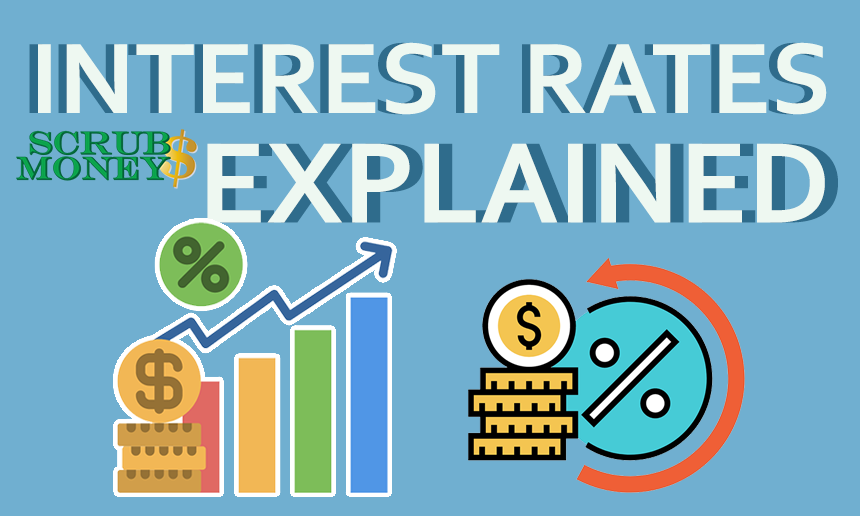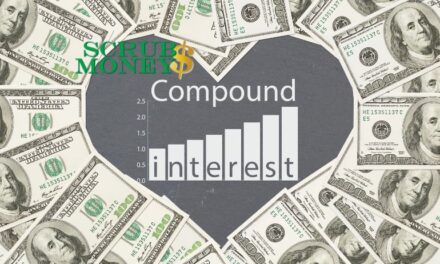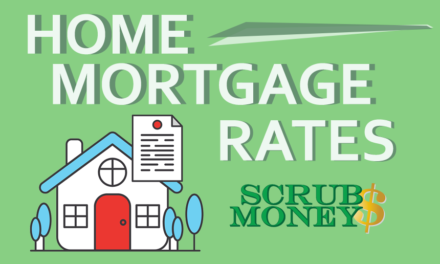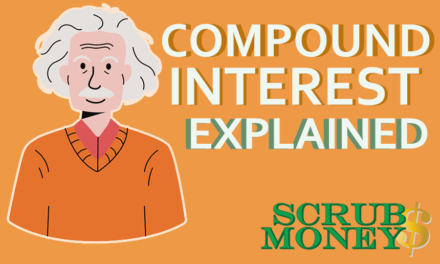What are interest rates and how do they work? We hear about them all the time, especially when borrowing money. If you have a mortgage or car loan you want your interest rates to be low. If you live off your savings or investments, you want them to be high. But have you ever wondered about all the different types of interest rates? Fixed, variable, compound! Or what makes them go up and down? Here, ScrubMoney explains interest rates in simple terms:
What is an interest rate?
Interest is the amount paid on borrowed money. If you borrow money, you pay interest. Home mortgage loan rates are paid monthly, based on an APR (Anual Percentage Rate).
If you save your money in a bank, for example, the bank pays you interest for borrowing the money from you.
The amount you pay, or are paid, is calculated by using the interest rate. These are expressed as a percentage.
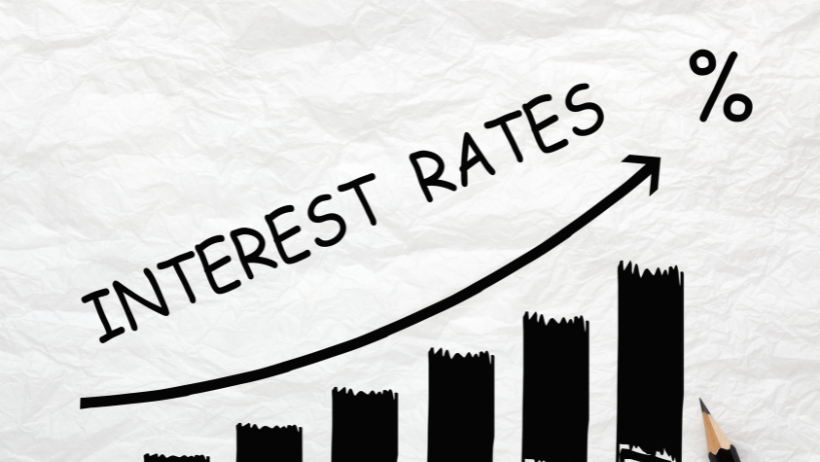
What’s a Simple Interest Rate?
There are two formulas used when interest is applied, simple interest and compound interest.
Simple interest is, well, the simplest way of working out interest. It is a set percentage paid on the principal amount you borrow or invest.
Simple Interest Rate Formula
If you borrow $10,000 and the interest rate is 10% per year for three years, you pay back $3,000 in interest, plus the initial amount borrowed.
The basic formula for working out simple interest is principle times rate times period of time.
Using the scenario above:
Interest = p x r x t
= $10,000 x 0.10 x 3
= $3,000 Total Interest Due
What’s a Compounding Interest Rate?
Compound interest is the most common method as it makes the most profit for lenders. This also means that you pay more in interest over the life of a loan. But it is the best method when you are investing as it speeds up the wealth generation process.
Compound interest is interest on interest. When you borrow money you pay interest on the principal (or capital) amount. This is the amount you originally borrowed. With compound interest, you are also paying interest on the amount of interest you will be charged for the time period (called a compound period – year, month, day). Banks like this interest when lending as it has a snowball effect. Given how complicated it can be it is best to use some examples.
If we use the same loan details as in our simple interest example and apply to compound annually (note that most banks use a compound period that is more frequent than annual). You borrow $10,000 with a compound interest rate of 10% annually. You would owe $3,640 in interest. You owe 10% on the annual balance, which would increase every year.
Compound Interest Rate Formula
The formula for compound interest is more complicated.
Compound interest = p x [(1 + interest rate)n -1] > p is the principle and n is the number of compounding periods (life of the loan).
= $10,000 x [(1 + 0.10)3 – 1]
= $10,000 x [1.10 -1]
= $10,000 x .331
= $3,110 Total Interest Due
So, over 3 years you would pay back $13,110 total for borrowing $10,000.
Fixed v Variable Interest Rates
Now that we understand how interest is applied let’s talk about the difference between a fixed and variable interest rate.
Fixed Interest Rates Explained
A fixed interest rate is well, fixed. It is set. Sometimes it can be set for the entire period of the loan or investment. Often though, it will be set for a given time period. For example on a mortgage, you may find that you can set your interest rate for the first five years only.
Fixing an interest rate is useful if you need to know the exact repayments or earnings. If you are borrowing it can also be an advantage if you think interests are going up or if you are investing, going down. The risk is that the opposite occurs – you borrow and rates fall or you invest and rates rise.
Variable Interest Rates Explained
These are often called fluctuating or floating interest rates as they change as the market changes. When borrowing, variable interest rates are often lower than fixed interest rates at the beginning of a loan. This can mean you can borrow more. But there are disadvantages too. Your interest rate could rise or fall at any time depending on the market. This can affect your loan repayments or interest earned.
Factors that Affect Interest Rates
In determining what rate they will charge – banks and other lenders look at several factors. The amount of interest you pay on a loan or credit card is mostly determined by your credit score.
The official interest rate is set by the central bank of each country. When the Federal Reserve adjusts rates in the US, banks, and lenders will use this as a baseline for what they will charge or pay as interest.
Inflation also affects interest rates. As inflation rises so too do interest rates. And consumer demand for loans can also affect interest rates. The more people who want to borrow the higher interest rates tend to go. Rises in interest rates tend to dampen an economy.
Economic development can increase if interest rates are lower. More people borrow and then spend the money causing the consumer market to expand.
Summary of How Interest Rates Work
Understanding how interest rates work and the factors affecting them fully would take much longer than the time we have here today. But having this basic understanding of how interest works can help you on your path to financial freedom.
In a world where credit is important, interest rates for financing is too. Simply put, you want to pay low interest rates when you borrow money, and high rates when you save or invest.
Did we miss anything or have any questions? Let us know by reaching out on social media or commenting bellow.

